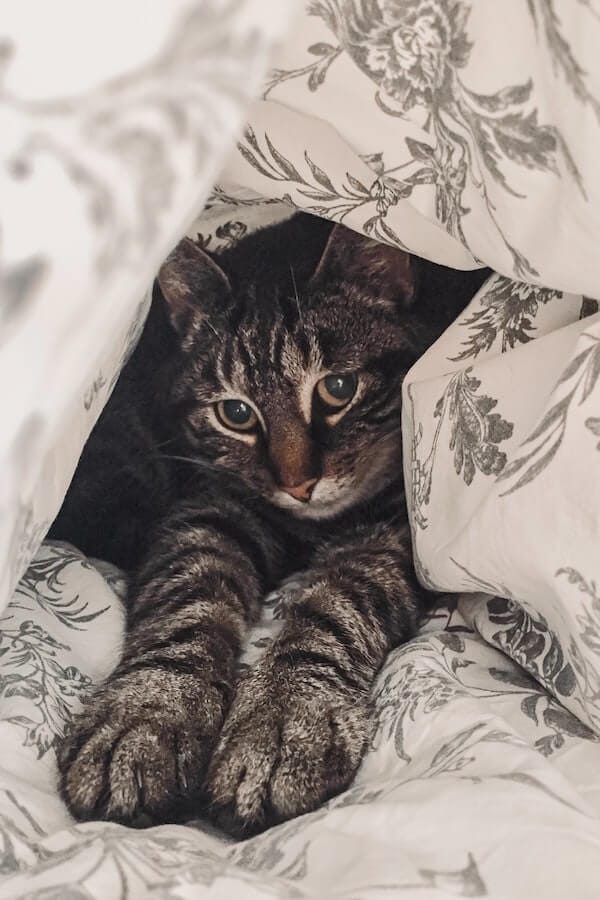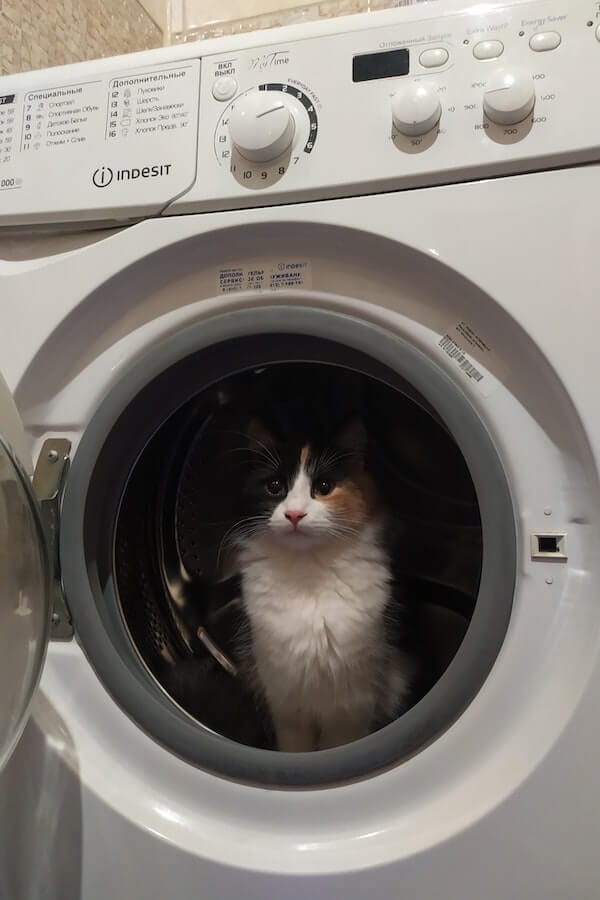
Not all cats are born to be social butterflies. Some cats, as much as we adore them, may just need a little bit of extra help in learning how to make friends and come out of their shells. So how to get a cat to stop being shy
If your cat is shy and needs a nudge to get used to new people and environments, don’t despair!
With a few simple tips and tricks, you can help your feline friend become more confident and comfortable around others.
Here are a few things that you need to understand in order to help out a shy cat.
Why is my cat so shy?

Cats are complex creatures with personalities as varied as their fur colors. So, why is your cat so shy? Well, there could be any number of reasons! Here are three potential explanations:
1. It’s in Their Genes:
Believe it or not, some cats are born naturally timid. Just like people, cats have temperaments that range from outgoing to shy and reserved – and this can depend on breed, too!
2. They’re Not Getting Enough Stimulation:
Cats need stimulation to stay healthy and happy – both physical and mental. Lack of environmental enrichment can lead to a shy kitty who is afraid of new things or people because they haven’t been exposed to them before.
3. Poor Socialization:
If your cat hasn’t been socialized properly as a kitten, they may be extra shy and suspicious of new people or situations. Things that seem normal to us – like loud noises and shouting – could cause them to hide away in fear.
What do cats do when they are shy?

Do you ever wonder what cats do when they are feeling shy?
Well, we can’t ask them directly but there are a few tell-tale signs that their owners can use to try and figure out if their pet is feeling a bit bashful.
Sign #1
The first sign of a shy cat is hiding away from people or other pets. If your feline friend seems more eager to escape than usual, it might be because they’re feeling timid.
Similarly, if your cat seems to want more alone time than usual and often seeks refuge in dark corners or behind furniture this could also mean they’re feeling a bit overwhelmed.
Sign #2
Look out for signs of stress such as excessive meowing or sudden changes in behavior. A shy cat might become more clingy than normal and follow you around the house or act quite erratically.
They may even start to vibrate as if they’re purring but without making any sound — a sure sign that your kitty is feeling anxious.
Sign #3
Watch out for changes in their sleeping patterns.
A shy cat will often spend more time hiding away than usual and so sleep much longer during the day while being wide awake at night time when it’s usually quieter.
Additionally, they might also be less eager to play with toys or take part in activities that they normally enjoy.
Sign #4
Keep an eye on body language such as flattened ears or a tucked tail. Other signs of discomfort include shaking, panting, drooling or even trembling. If your pet is displaying any of these signs it’s likely that they’re feeling a bit shy and need some extra love and attention to help them feel more at ease.
Sign #5
Lastly, be aware of any changes in appetite. A shy cat might stop eating entirely or eat less than usual if they’re feeling anxious or scared — so keep an eye out for this!
How to get a cat to stop being shy?

Many cats can be a bit apprehensive when it comes to getting used to people and environments, but that doesn’t mean they can’t become outgoing and confident. Here are 10 tips to help your kitty overcome its fears:
1. Spend time with your cat
The more familiar they become with you, the less scared they will be of new situations. Speak softly, pet them gently, and play frequently with them.
2. Give your cat an area where they feel safe
This could be a carrier or a sectioned-off corner of the room where they can go when feeling overwhelmed by unfamiliar surroundings.
Make sure this spot is away from loud noises or other animals.
3. Don’t rush interactions
Give your cat time to adjust to you and their environment. Allow them to explore without being chased; this will help build trust between the two of you.
4. Provide plenty of stimulation
Set up a kitty playground with scratching posts, toys, tunnels, etc. This will keep your cat mentally stimulated and help them get used to new environments faster.
5. Introduce them gradually to other cats and people
Avoid shoving your cat into situations with too many unfamiliar faces or scents all at once as this can be overwhelming for them.
Instead, introduce them one by one so they can become accustomed more easily over time.
6. Give them a safe space
Place a cat tree or bed in an area of the house that isn’t heavily trafficked by other people or animals. This will give your kitty a sense of security.
7. Use treats to reward good behavior
Reward your cat with treats when they come out of hiding, approach you, or interact with other cats and people. This will help them form positive associations with new experiences.
8. Consider consulting a vet
If your cat is still shy after trying these tips, consider seeing a vet for further advice as it could be due to an underlying medical condition or fear-related disorder.
9. Provide plenty of affection
Cats love affection just like any other pet! Make sure to show your kitty that they are loved and valued by cuddling, petting, and providing lots of positive reinforcement.
10. Seek professional help
If you’re still having trouble with a shy cat, consider talking to an animal behaviorist or veterinarian who specializes in cats.
They can give you more personalized advice tailored to your situation and help your cat overcome their fears.
Are some cats naturally shy?

Are some cats naturally shy? The answer is a resounding ‘yes’! To understand why we need to look at genetics.
Genes are like blueprints that determine the physical and behavioral traits of cats.
Depending on what genetic variants a cat carries, it can be more likely to exhibit certain behavior patterns – such as being shy or outgoing.
For example, if a cat has inherited genes that make them sensitive to new people or environments, they may be more inclined towards shyness than others of their kind.
In addition to this genetic predisposition, socialization during kittenhood also plays a role in determining how confident an adult cat will be around strangers.
When it comes to breeds that tend to show natural shyness, the Russian Blue and Chartreux are two prime examples.
Both of these breeds are typically reserved around people they don’t know well, and may even hide when new visitors come over.
In contrast, confident cat breeds like the Siamese and Bengal tend to be social breeds – they love meeting new people and being the center of attention.
Conclusion
Now that you know how to get a cat to stop being shy, remember, the key is patience and understanding.
While it may take time for them to adjust, with a little bit of love and positive reinforcement you can help your furry friend come out of their shell.
All cats are different, so don’t be disheartened if progress seems slow or non-existent – it’s important to keep trying and giving them the space they need to feel safe.
At the end of the day, you’ll know when your cat is ready to come out of their comfort zone and show you just how much personality they have!
- 7 Dog Breeds With Webbed Feet And Why Do They Have Them - July 19, 2023
- 10 Best Fish For Small Tanks That Make Perfect Pets - July 18, 2023
- How to Breed Guinea Pigs: A Detailed Guide - July 17, 2023


GIPHY App Key not set. Please check settings